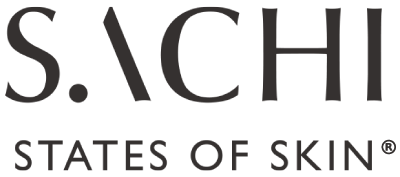7 min read
We believe antioxidants are one of the most underrated power house ingredients in a great skincare routine. Read on to find out why.
What are antioxidants and how do they work?
In short, these are ingredients that help prevent free radicals in our environment from causing damage to our skin and help with a myriad of skin concerns like well-ageing, acne or brightening.
However to understand antioxidants better, we first need to understand free radicals and oxidative stress. Free radicals are very reactive molecules that cause destructive chain reactions in the skin. If our skin is equipped with enough antioxidants, they can help keep it safe from damage. When there are not enough antioxidants to balance free radicals, the damage inflicted on our skin is called oxidative stress.
Oxidative stress degrades the collagen, elastin, lipids and proteins in our skin. It also damages the skin barrier, resulting in sagging, fine lines, wrinkles, dark spots and overall dullness.
Why do we need antioxidants?
Realistically, a small amount of free radical exposure is inevitable, as they mainly come from everyday environmental factors like UV rays, air pollution, cigarette smoke and pesticides. The antioxidant gradient in our skin barrier counters this, supplemented by antioxidants we take in from our food. But with climate change and urbanisation, the amount of UV rays and pollutants we are regularly exposed to may be too much for our natural antioxidant gradient to handle.
You can't get away from the sun or the air, so you'll need to find a way to protect yourself from its damaging effects. Sunscreen is an important part of this plan, but it's not enough on its own. This is where antioxidants come in to act as a second line of defence. It’s aim is to cover as many bases of protection as possible to ensure we are well defended against environmental damage!

What are the benefits of antioxidants?
Hyperpigmentation


A well-ageing saviour
Free radical damage caused by sun exposure is known to be the biggest contributor to skin ageing. This is due to the breakdown of skin collagen and elastin, both essential for skin elasticity and firmness. This is where antioxidants and good SPF become your skin saviours.
Acne
Oxidation of sebum alters the quality of sebum (sometimes referred to as sticky sebum or lipid peroxidation of sebum). This in turn can lead to an ideal environment for C.acnes bacteria to thrive. Which means oxidative stress caused by free radicals might be one of the key factors that lead to an ideal environment for diseases like acne to develop. So ploughing our skin with antioxidant support makes sense if you are worried about the onset of breakouts.
Why is combining multiple antioxidants important?
This is where things can get a little complicated and technical. But stay with us, this information can potentially transform your skin!
As mentioned, antioxidants balance the free radicals in the skin to prevent it from afflicting damage. But after they have quenched the free radicals, antioxidants are used up and are not able to attack free radicals anymore. But if you have a network of many different antioxidants, each one will be able to regenerate one another after being used up. Meaning, you will be able to keep up a constant cycle of antioxidants in your skin, inhibiting free radical damage without stopping.
What the network of antioxidants teaches us is that antioxidants are not interchangeable. Adopting one antioxidant in our skincare does not guarantee the full range of protection they can potentially offer us.
Following is a list of antioxidants that help you employ a broad spectrum of protection for your skin.
9 powerful antioxidants for your skin (botanical and non-botanical sources included
1. Superoxide Dismutase (SOD)
This enzymatic protein can be naturally found in the human body, which decreases in amount over time. So when included in our skincare, they can help with well-ageing as it helps to keep up the normal antioxidant levels in the skin. It also serves anti-inflammatory benefits and some evidence points to how it can be an early preventative step for cancer cell formation. [1]
2. Triphala
In our opinion, Triphala is one of the best botanical extracts you can reach for to get broad spectrum antioxidant benefits. It contains the Amla Extract, a rich source of Vitamin C and a generous amount of flavonoids like Polyphenols and Ellagic acid to help recycle it. It can also help recycle superoxide dismutase and glutathione when used together topically. [2]
3. Glutathione
This is another antioxidant that is found in the body, in almost every cell. When applied topically, it reduces the negative effects of sun exposure on skin health and appearance. Reduced melanin level, TEWL (Trans Epidermal Water Loss) and appearance of wrinkles were observed, plus an increased skin elasticity. [3]
4. Holy Basil
This ayurvedic adaptogenic herb adapts to changes in the skin like increased stress to always keep it balanced while combating free radicals. It has been shown to increase the strength of the tissue in deeper layers of the skin to accelerate wound healing. [4]
5. Vitamin C
This cult-favourite antioxidant lives up to its lofty reputation. In the network of antioxidants, Vitamin C is one that can revive itself, and also revive Glutathione, prolonging its protection on the skin. Besides being a strong free radical inhibitor, it can also suppress melanin production, support collagen and display anti-inflammatory activity. This makes it a true multitasking ingredient that addresses well-ageing, dark spot-prone skins and acne-prone skins all at once. [5]
6. Tocopherol (Vitamin E)
This is an abundant antioxidant easily found in many plant extracts. Its antioxidant benefits are well documented and used widely across cosmetic and dermatological applications. They work exceptionally well when formulated with Vitamin C as it is able to regenerate Vitamin E. [6]
7. Niacinamide (Vitamin B3)
The cells in our body contain a chemical called NADPH*, which are the natural antioxidants found in our skin. Niacinamide is able to raise the levels of NADPH, strengthening the skin barrier to be more resilient against free radical attacks. Additionally, it also helps to brighten the skin, reduce the appearance of fine lines and wrinkles, and decreases persistent skin redness. [7]
8. Silymarin
Mainly containing Glutathione, Silymarin also carries Uric Acid, Albumin, Carotenoid and Ascorbic Acid (Vitamin C) - all antioxidants that can directly deactivate free radicals. Not forgetting Flavonoids, which regenerate the above antioxidants. When used with Triphala, it will be able to create a complete network of antioxidants and go as far as helping with brightening needs, as seen in our Triphala Pigmentation Corrector. [8]
9. Rosemary
This is another adaptogen with active antioxidant components known as Carnosol and Carnosic Acid. Carnosic Acid consumes free radicals and turns itself into Carnosol while Carnosol help prevent lipid peroxidation. Together they strengthen the skin barrier and protect the skin from environmental aggressors. [9]
Antioxidants are essential to skin health, protecting us from free radicals that weaken and damage the skin leading to a spiral of skin concerns. Have we convinced you enough of their need? 😉
*NADPH - Nicotinamide Adenine Dinucleotide Phosphate
References
1. https://www.ncbi.nlm.nih.gov/pmc/articles/PMC5969776/pdf/IJHS-12-88.pdf
2. https://www.ncbi.nlm.nih.gov/pmc/articles/PMC5567597/pdf/acm.2017.0083.pdf
3. https://www.ncbi.nlm.nih.gov/pmc/articles/PMC5413479/pdf/ccid-10-147.pdf
4. https://www.ncbi.nlm.nih.gov/pmc/articles/PMC4296439/pdf/JAIM-5-251.pdf
5. https://www.ncbi.nlm.nih.gov/pmc/articles/PMC3673383/pdf/IDOJ-4-143.pdf
6. https://www.ncbi.nlm.nih.gov/pmc/articles/PMC4976416/pdf/IDOJ-7-311.pdf
7. https://www.ncbi.nlm.nih.gov/pmc/articles/PMC2921764/pdf/jcad_3_2_22.pdf




